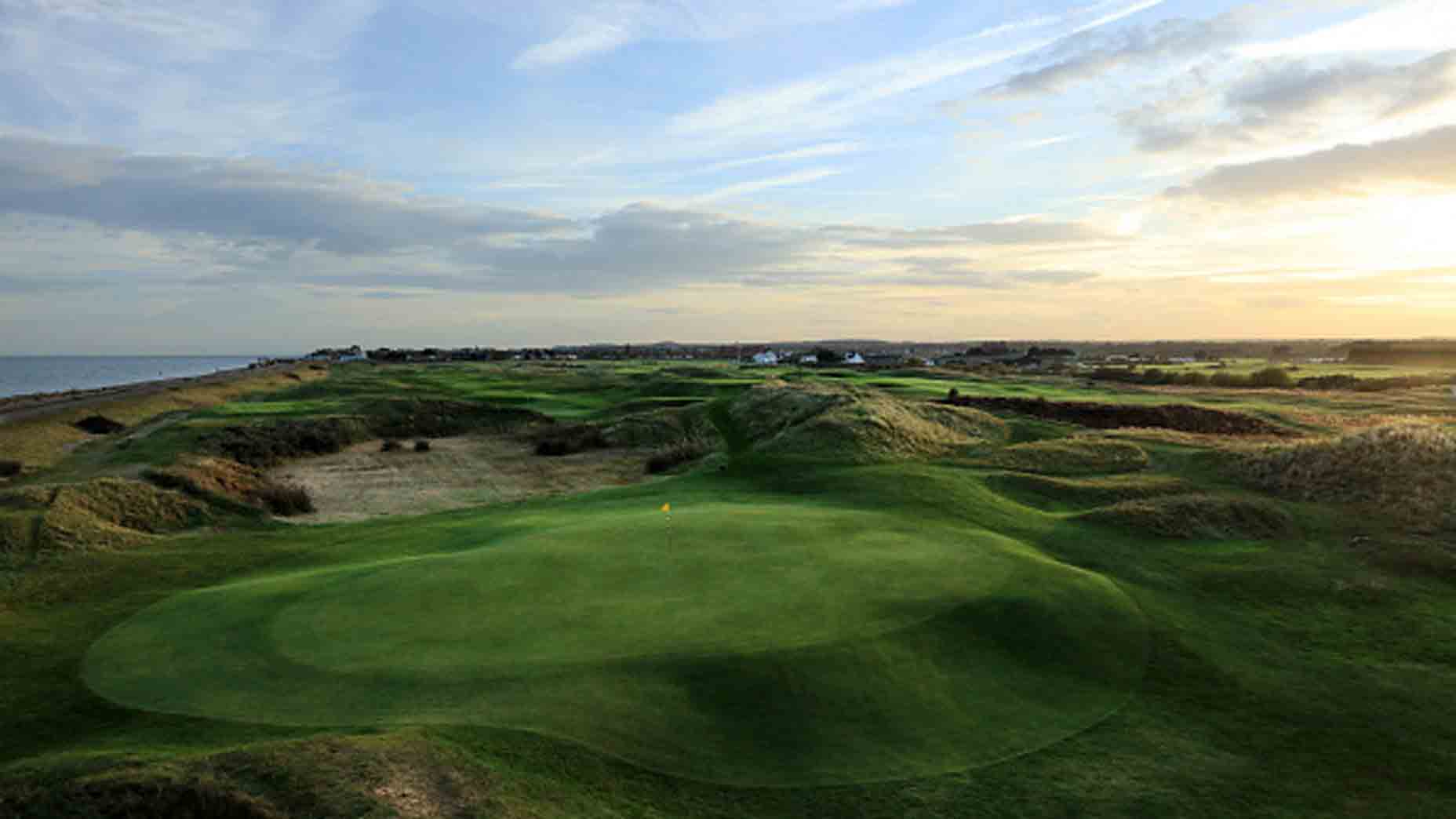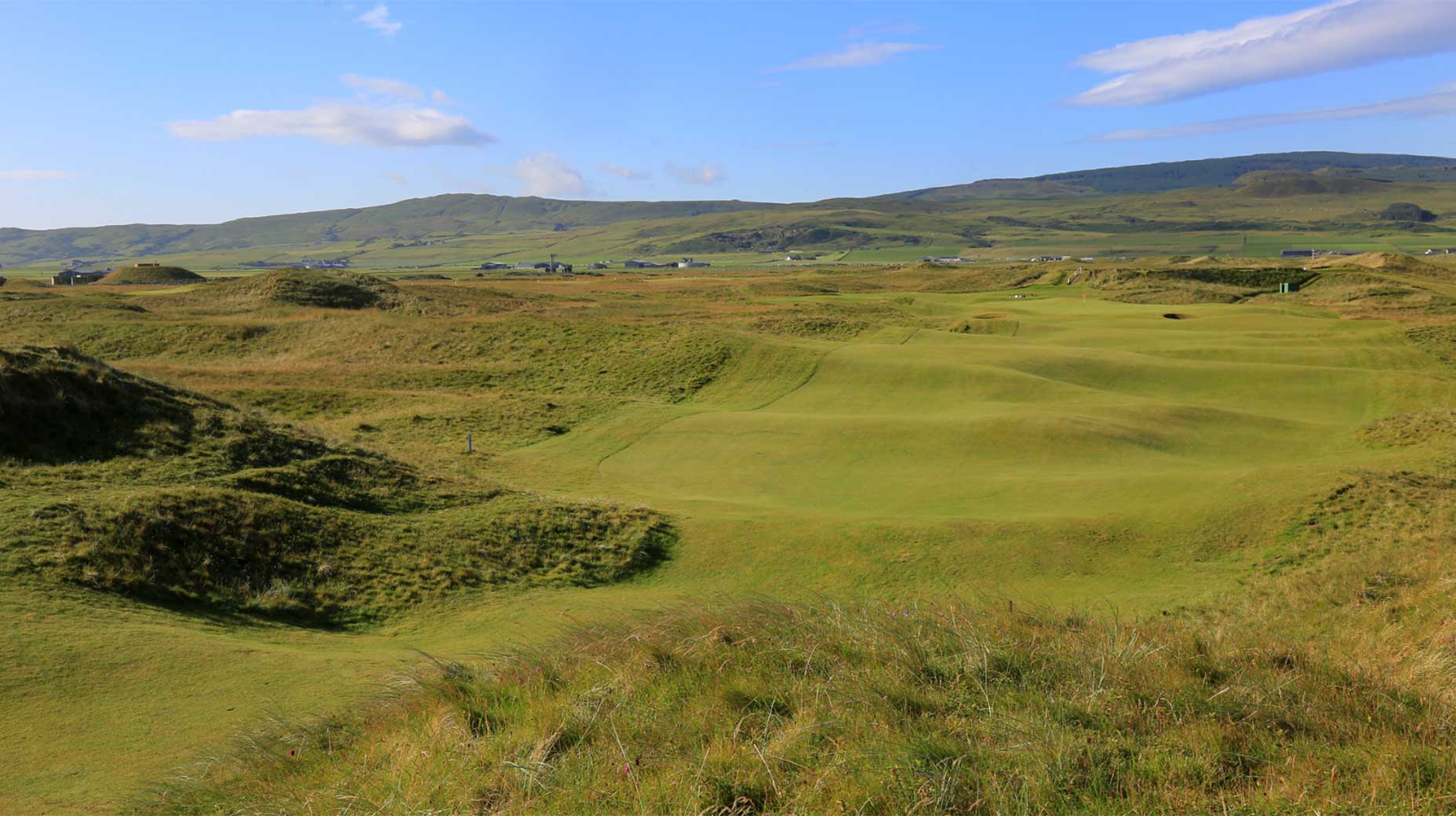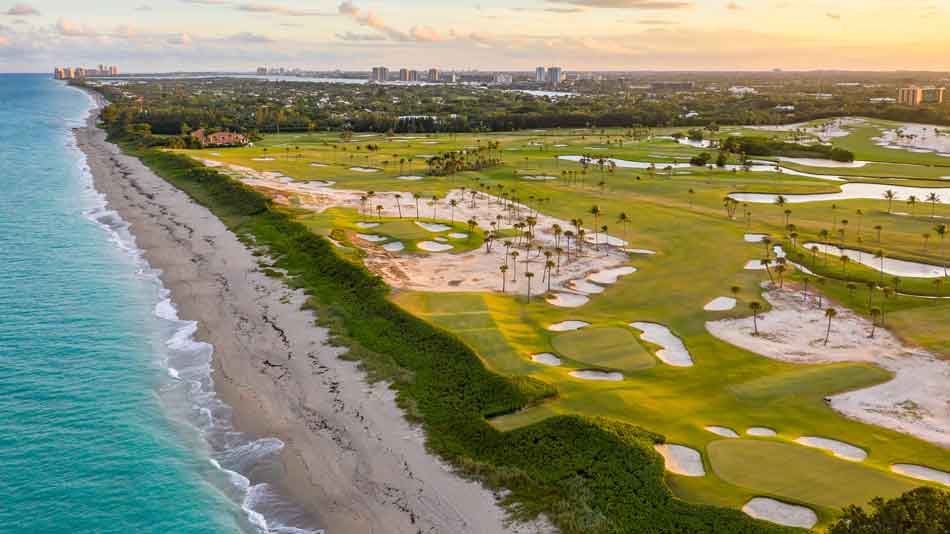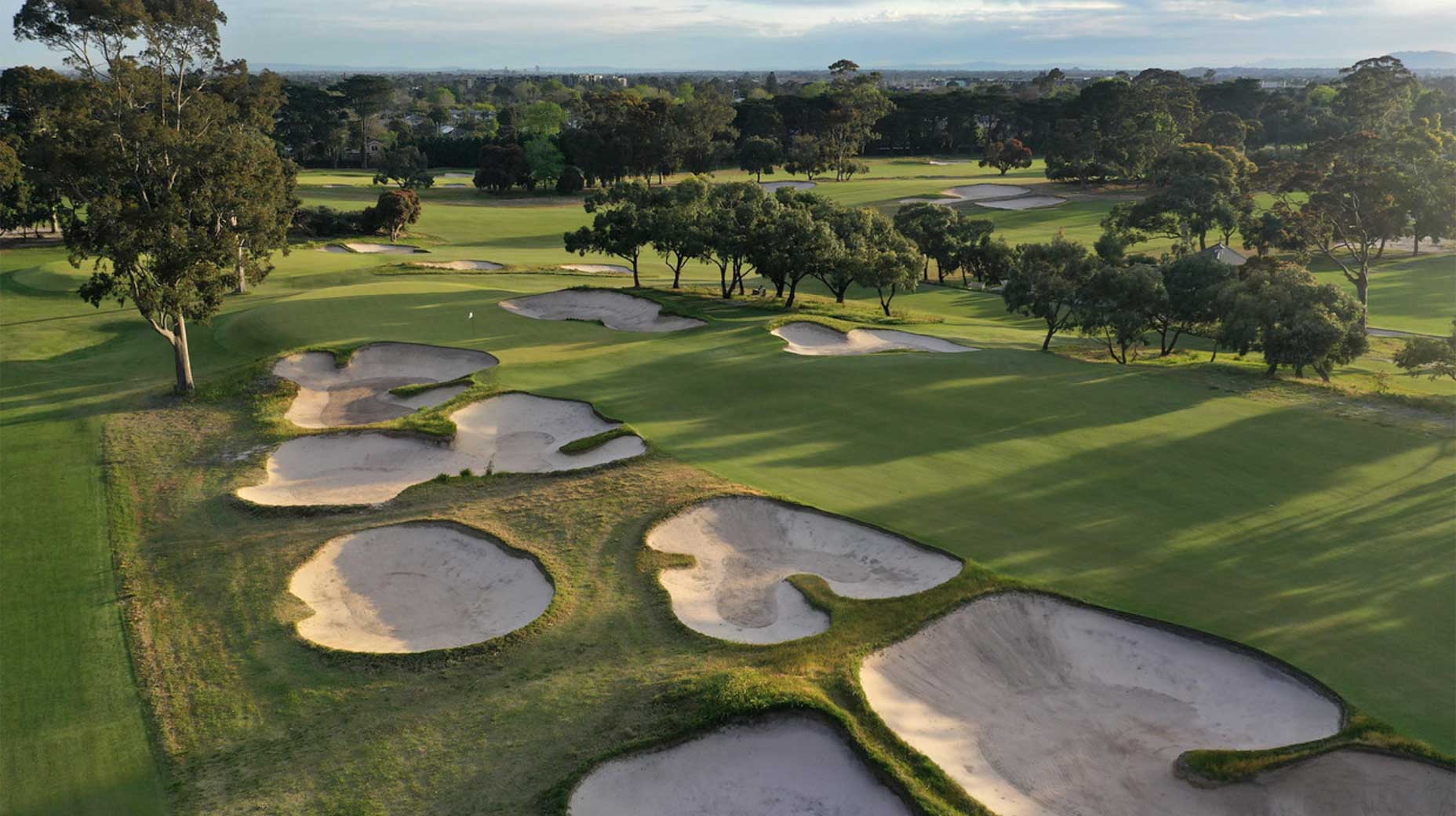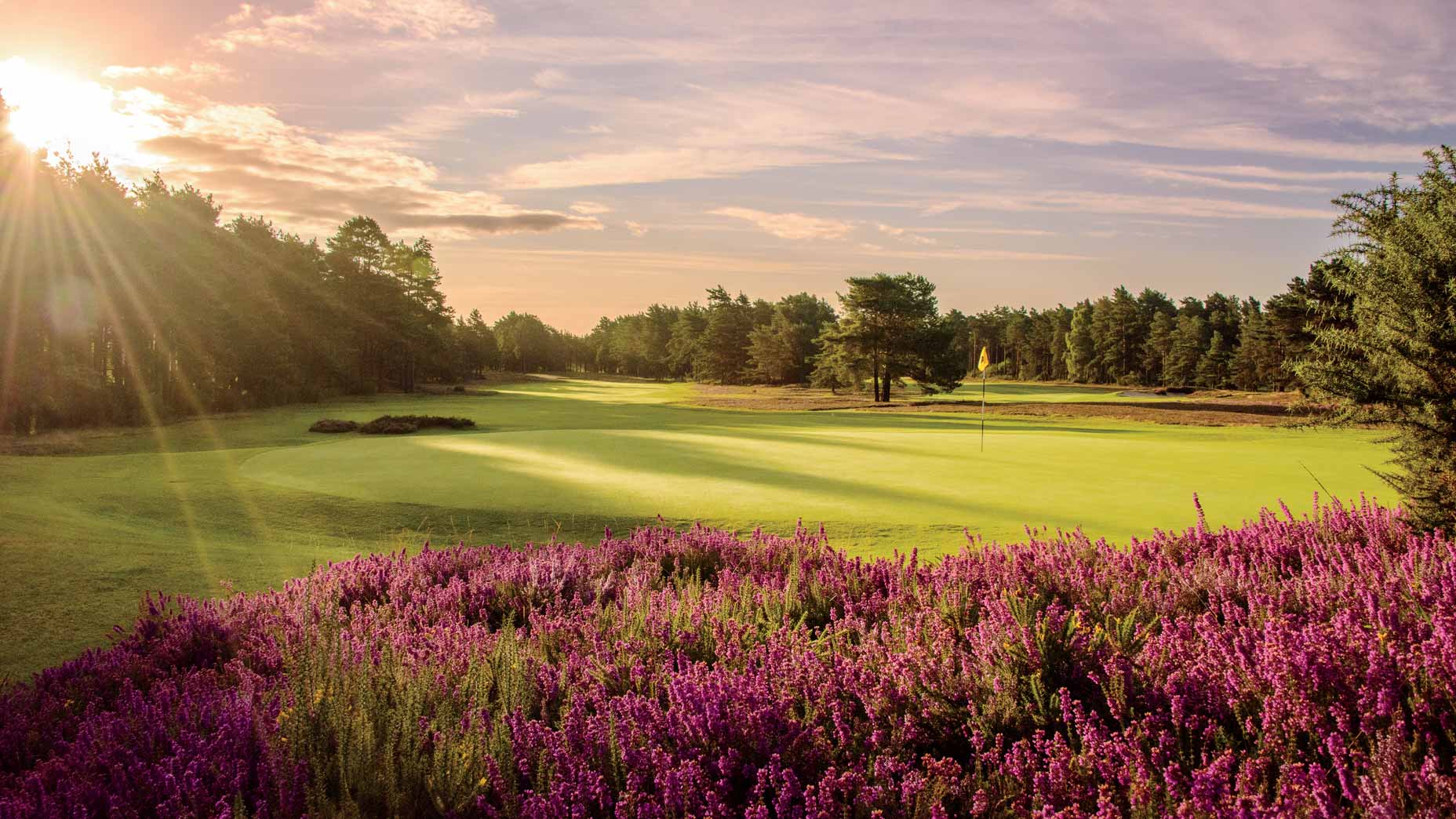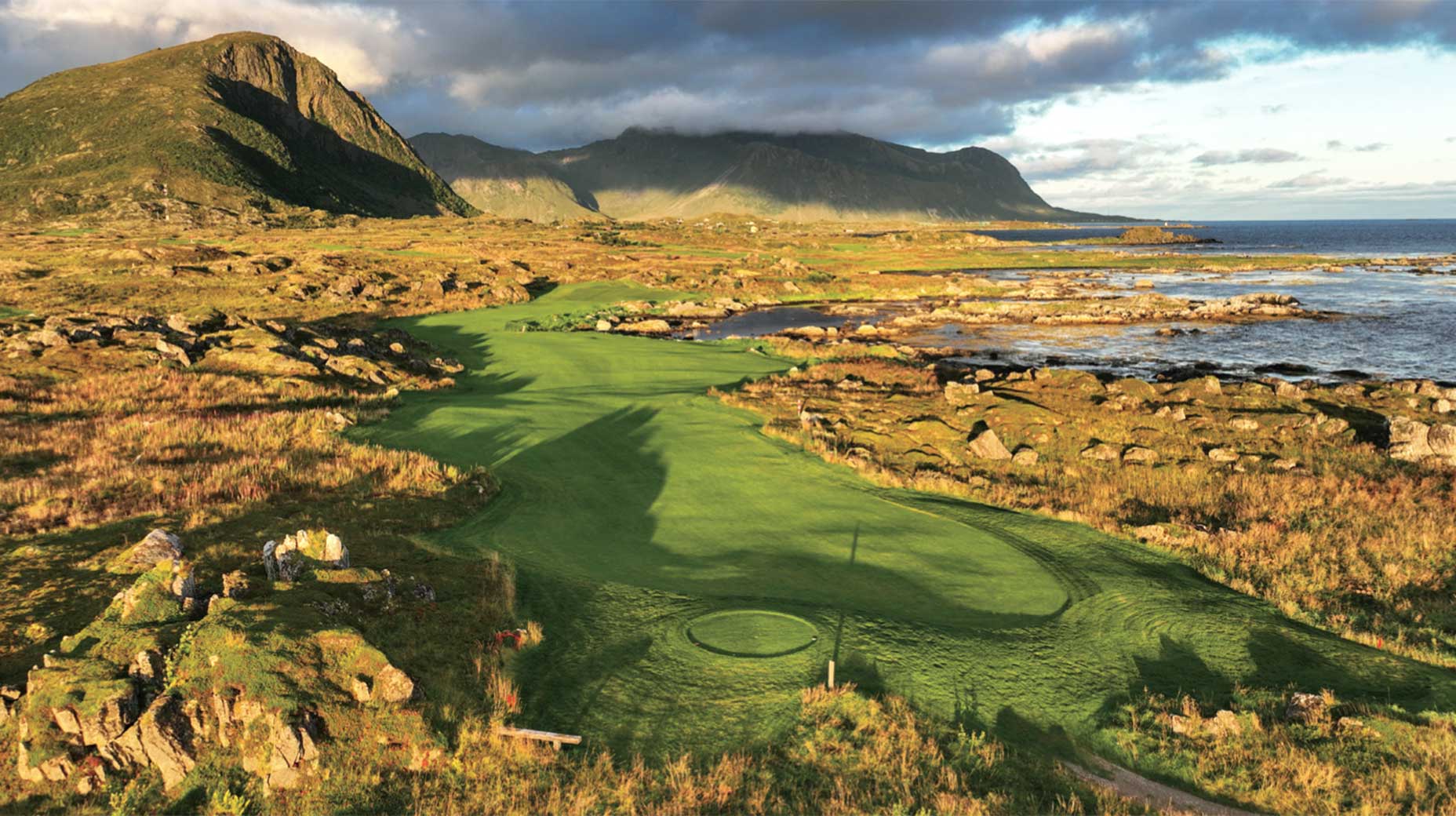So close! These 25 courses missed our latest Top 100 World list by the narrowest of margins
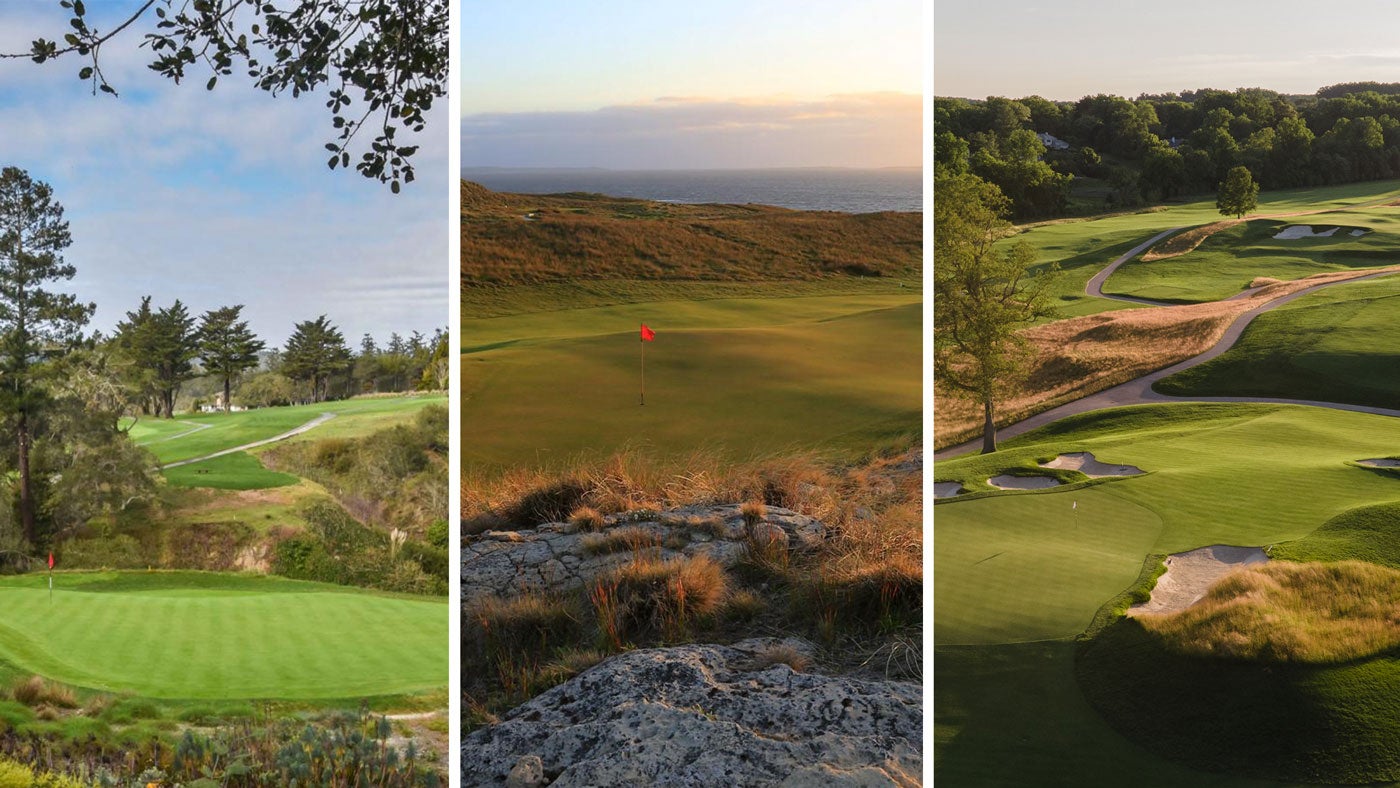
From left: Pasatiempo, Cape Wickham and Congresssional (Blue).
From left: Patrick Koenig, Gary Lisbon, James Lewis
Whenever we publish a new GOLF Top 100 ranking, invariably the most asked question is, “So, which courses just missed out?”
In the case of our latest list — GOLF’s Top 100 Courses in the World for 2023-24 — we’re answering that query by revealing the course themselves: World Nos. 101-125. Statistically, the difference between these courses and, say, No. 90, is grass-blade thin, with only a few ranking points separating them. And yet the difference between, say, De Pan, in the Netherlands, clocking in at No. 94 in 2021 versus No. 101 in 2023 still feels significant — no doubt especially to the many fans of the Harry Colt heathland classic.
To say the following list of 25 courses is world-class is no exaggeration and, not surprisingly, it features some of the all-time great architects and some with multiple entries, including Pete Dye, Alister MacKenzie, C.B. Macdonald, Stanley Thompson and A.W. Tillinghast.
When we update the World list two years from now, it would be no surprise to see some of these courses break into the Top 100. Stay tuned, and before you ask, No. 126 is the enchanting Willie Park Jr. design at Notts Golf Club, in England!
Methodology: How we rate courses | Meet our expert panelists
GOLF’s other course rankings: Top 100 Courses in the U.S. | Top 100 Courses You Can Play | Top 100 Value Courses in the U.S. | America’s Best Municipal Courses | Top 100 in the U.K. and Ireland | Top 100 Short Courses in the World
101. De Pan (Utrechtche)
Utrecht, Netherlands
Harry Colt, 1929
Modern architecture did itself no favors by pursuing holes that constantly scream at golfers, because at some point golfers go tone deaf. Colt never went down that path and the result is designs that enjoy timeless appeal. At De Pan, he did what he did best: produce a course that is a delight to play every day. The overall setting is one of pure tranquility with the vibrant heather beautifully framed by evergreen trees. The property isn’t expansive, but you generally play golf in seclusion as you meander down your own hole. A prime differentiator here vs. the heathland courses around London is the dune system that runs through the course. A master router, Colt incorporated the dunes in a creative manner, from weaving them in twice as obstructions at the difficult two-shot 6th to having them bisect the 10th fairway to placing tees and greens on them, as he did at the 17th. Add even more charm to the property are Frank Pont’s careful restoration work for more than a decade and the thatch-covered clubhouse.

102. St. Enodoc (Church)
Wadebridge, England
James Braid, 1907
James Braid is famous for many reasons, including for both his skill as a golfer and course designer. Picking a favorite Baird design is tough duty — would you go with the Kings Course at Gleneagles; or Brora, just north of Dornoch; or hidden gem Fraserburgh, north of Cruden Bay or…here? Our panel says here, where Baird adroitly worked with some of the wildest terrain in his career. The course begins with a visually appealing, though gentle, par-5 before throwing haymakers with several long, brutish par-4s, like the 2nd, 3rd, the take-no-prisoners 10th and its demanding closer. For playing angles, few holes rival the short dogleg-left 4th with out-of-bounds hard down the right. But this course will always be best known for one of the game’s deepest and fiercest hazards, the Himalaya bunker 90 yards short of the 6th green. Though St. Enodoc measures less than 6,600 yards, its tight par of 69 still provides a stiff test.
103. St. George’s G&CC
Etobicoke, Canada
Stanley Thompson, 1929
Few architects are as closely tied to one country as Stanley Thompson is to Canada. From Capilano in the west to Cape Breton Highlands in the east and Banff and Jasper Park in Alberta, Thompson redefined what constituted great golf in his homeland. Without doubt, St. George’s is his parkland masterpiece, featuring holes that he weaved through and over natural valleys and past streams. The design is a delightful members course while still being challenging enough to host multiple Canadian Opens. Tom Doak and Ian Andrew spearheaded a restoration that was completed in 2015 and revitalized Thompson’s unique bunker schemes and configurations.
104. Quaker Ridge
Scarsdale, NY
A.W. Tillinghast, 1926
This discrete club across the street from Winged Foot has long attracted admirers, including Jack Nicklaus and Pete Dye. Its outstanding cluster of gently rolling par-4s, notably the 6th, 7th and 11th holes, provided a terrific canvas for the likes of Justin Rose and Jason Gore in the 1997 Walker Cup. Dating to 1916, the course was made over by A.W. Tillinghast in 1926, and Gil Hanse’s recent restoration has the course at its peak. Tillie was a big fan of central features that dictate play. That approach manifests itself at Quaker with a large mound in the middle of the 8th fairway and in the cross hazards at the long, uphill par-5 14th, both great holes. The par-3 9th is a sleeper. It is one of the hidden gem one-shotters in the Northeast, though it may take a few rounds to figure out why.
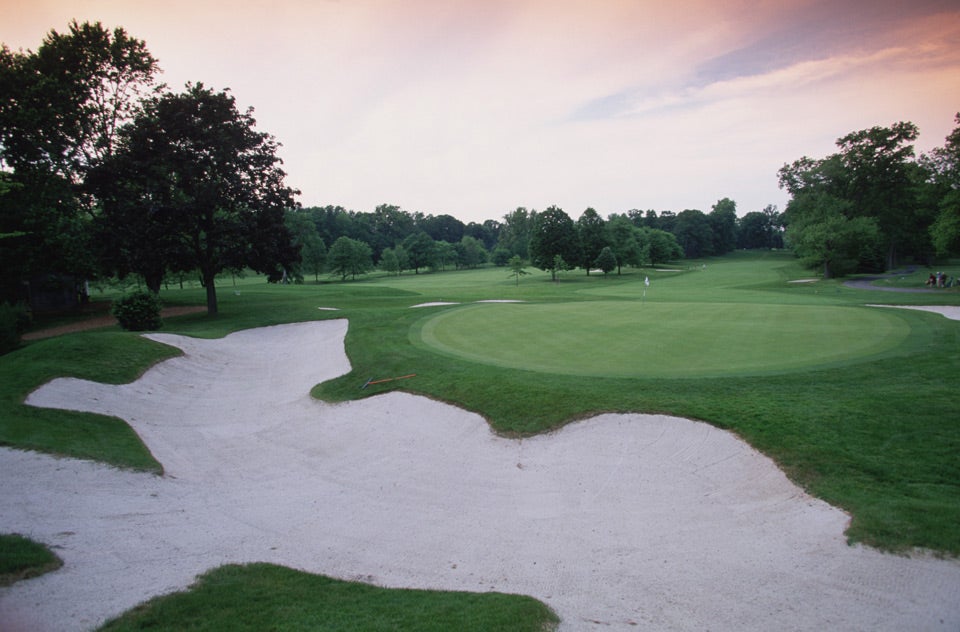
105. TPC Sawgrass (Players Stadium)
Ponte Vedra Beach, FL
Pete Dye, 1981
Some sniff at the artificiality of a course being hewn from a swamp, yet that’s also what makes the Stadium Course stand out. Home of the Players Championship since 1982, the design has evolved into a handsome battleground (however you feel about the towering clubhouse), highlighting Pete Dye’s talent for envisioning something from nothing. The short par-4 4th, reachable par-5 11th and the long par-4 14th rank among Dye’s all-time best. For shotmaking options and memorable individual holes that require a blend of power and finesse, the Stadium Course has few peers.
106. CapRock Ranch
Valentine, NE
Gil Hanse/Jim Wagner, 2021
The raw property enjoys copious natural advantages with which few other sites can compete, as this Gil Hanse and Jim Wagner design takes advantage of both the Snake River valley and the bordering dunescape. Eight greens are set along or border the Snake River valley. Standing on the 6th green, you look down and see the winding river some 190 feet below. (Always neat to see a 10-million-year-old feature in a three-year-old design!) The holes away from the valley play into dunes with some greens, like the 8th, enjoying punchbowl qualities. Other greens, such as the 14th, are perched high, poised to wreak havoc. The routing effortlessly runs to the spectacular caprock cliffs back to the dunes and back again. The finishing four-hole stretch, including the drivable 17th and dramatic 230-yard 18th, is epic and produces wild match swings.
107. Cape Wickham
King Island, Australia
Mike Devries/Darius Oliver, 2015
Wickham wows with an opening stretch of seaside headland holes, three par-3s that skirt the sea and a Cape-style 18th that demands a bite-off-as-much-as-you-dare drive over Victoria Cove. The course is set on the northern end of King Island in the Bass Strait between Tasmania and mainland Australia, meaning wind is often a factor. Acknowledging this, the co-designers prudently imbued the design with wide landing areas and greens that are open in front, ensuring golfers have a rousing time, be they playing in a one-club wind — or four! The two-shot 14th that swings to the left is a particularly captivating and well-designed hole.
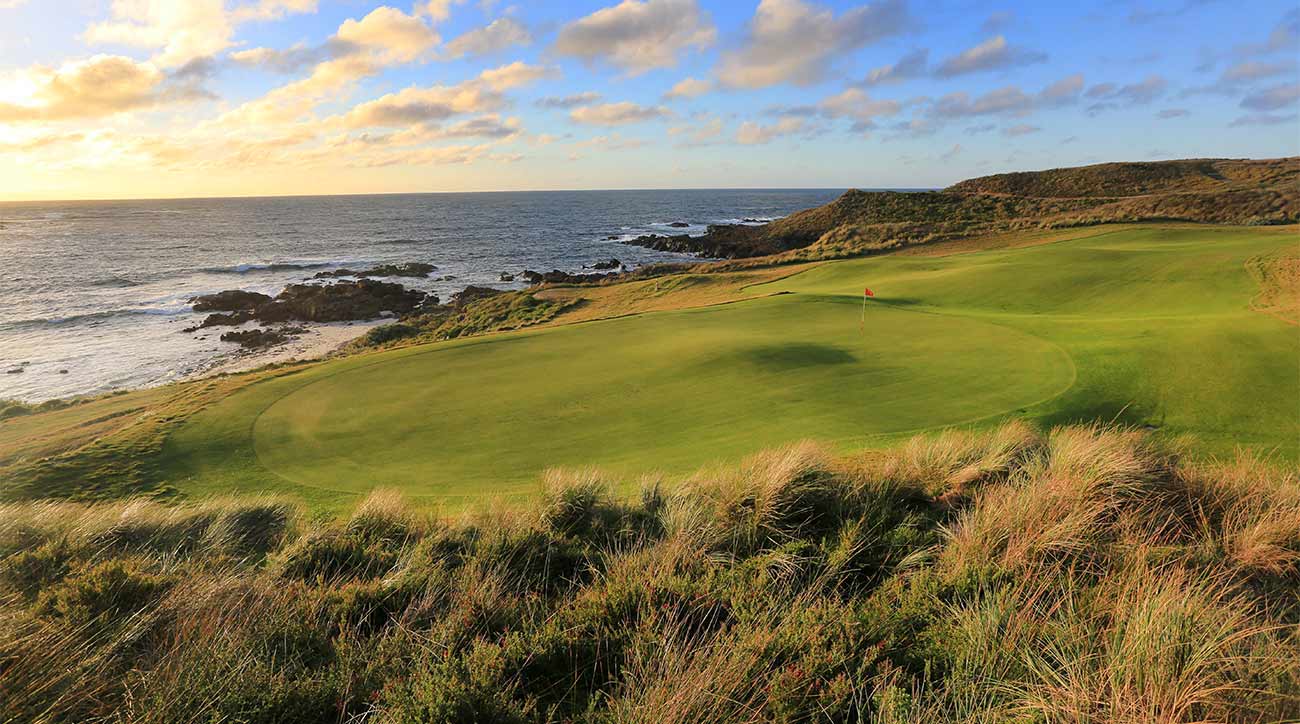
108. Toronto Golf Club
Mississauga, Canada
Harry Colt, 1912
Harry Colt did not spend much time in North America; in fact, many courses that are labeled Colt & Alison are exclusively the work of Hugh Alison. Yet, when the Maestro was here, he made his time count, starting right at the top with Pine Valley. One pure Colt design that has gained our panel’s attention in recent years is Toronto Golf Club. It benefited from a restoration by Martin Hawtree in 2010, and the club and its greenkeeper, Paul Scenna, also have done a fabulous job of opening up sightlines and exposing the neat landforms and ravines that zig and zag through the site. Several panelists now feel this is in Colt’s top tier of work — and there is no higher praise than that.
109. South Cape Owners Club
Gyeongsangnam-do, South Korea
Kyle Phillips, 2013
Kyle Phillips’ work shines at such diverse geographic locations as the California Golf Club of San Francisco, Kingsbarns in Scotland and Yaz Links in Abu Dhabi. Add in this South Korean course and you start to gain a sense of Phillips’ global footprint. Working for business magnate Jae Bong Chung, Phillips was given a sprawling coastal site complete with cliffs on an island just off the South Korean peninsula. First-timers would be forgiven for thinking that the par-5 6th, which twists uphill past rocks and large sandscapes, and the 220-yard 7th out over the sea are the highlights, but then comes the stretch from 13 to 16. The 16th is Asia’s equivalent of 16 at Cypress Point and debate exists as to which hole is finer. The clean lines and décor of the clubhouse and lodging show immaculate taste, and the music library is a can’t-miss.
110. Ellerston
Hunter Valley, Australia
Greg Norman/Bob Harrison, 2001
Greg Norman has long professed his admiration for Alister MacKenzie. At ultra-exclusive Ellerston, he and design partner Bob Harrison adapted MacKenzie strategies and bunker stylings on a rugged landscape, resulting in one of the strongest, most option-laden tests in the Southern Hemisphere. Forced carries over ravines, greens set along ridge tops and the influence of Pages Creek add to the challenge. Few golfers can access the course, which is a shame given there is so much to admire architecturally.
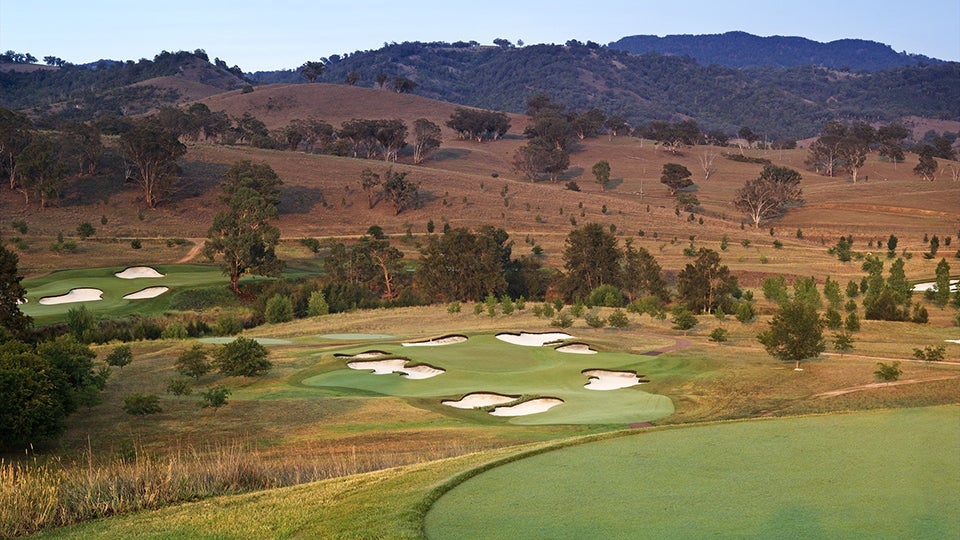
111. Walton Heath (Old)
Tadworth, England
Herbert Fowler, 1904
The design’s stark, open-plain setting is the very definition of a heath, and a test of character and shotmaking, Walton Heath has few inland peers. A strategic delight, it is stern but fair, with heather, gorse, rough and penal, high walled bunkers that must be avoided. The soil is free-draining, allowing for firm fairways that yield plenty of links-like run, and the open expanse means that wind is a likely consideration. Walton Heath was the venue of the 1981 Ryder Cup, when arguably the strongest American side ever demolished the Europeans, 18.5 to 9.5. For historians, this course holds a special place as it was one of the first designs specifically built with the new rubber core Haskell ball in mind.
112. Olympic (Lake)
Daly City, CA
William Watson and Sam Whiting, 1924
Sometimes the timing of a ranking works in favor of a club, such as when a restoration opens four months before ballots are due; other times, timing works against it, such as when a restoration opens three days after the balloting process has closed, as was the case with Olympic this year. In 2022-23, Gil Hanse and Jim Wagner augmented the charms of this historic course through tree removal to open up stunning vistas to Lake Merced, adding width and playing angles, expanding greens and returning some of William Watson’s flair to the course. The new 7th green, with its front left kick slope, has received high praise for providing one of the most fun approach shots in the Bay Area, which is saying something. Gone is thick rough around every green as Hanse and Wagner added much short grass to stimulate creativity. Kudos to William Watson, who might be the underappreciated important Golden Age architect.
113. Peninsula Kingswood (North)
Frankston, Australia
Sloan Morpeth, 1965; Ogilvy Clayton Cocking & Mead, 2018
Panelist Dana Fry writes, “When I think about my time at the North Course at Peninsula Kingswood GC, my thoughts center on the stirring elevation changes and how the holes flow seamlessly across them. As an architect myself, I am especially appreciative of the masterful routing. Throughout the round, I was always excited and left to wonder what was next. There were no weak links, something that is hard to pull off. The holes themselves are visually dramatic, framed by towering trees, sandy scrub areas and beautiful heathland type vegetation. The course played fast and firm with boldly contoured fairways and imaginative green complexes surrounded by tightly mowed greens surrounds that require golfers to hit a variety of recovery shots. Peninsula Kingswood also is one of the best conditioned courses I have ever played. Amazing design, sure to take its place as not only one of the best courses in Australia but also one of the world’s greats.”
114. Eastward Ho!
Chatham, MA
Herbert Fowler, 1922
Herbert Fowler will always be associated with his beloved first design, Walton Heath, outside of London, where he had to lend the open heath its golfing qualities as the site featured modest topography. What Fowler was presented with here on Cape Cod was the exact opposite: a glacial moraine with tumbling landforms that converge in the most random manners. What a challenge to route but his figure-8 routing with the clubhouse in the middle seized on the opportunity to perfection. The design’s one-shotters are among the finest sets in the Northeast, and some of its perched greens, like the 6th, are exasperating in the best way, especially when the coastal breeze picks up.
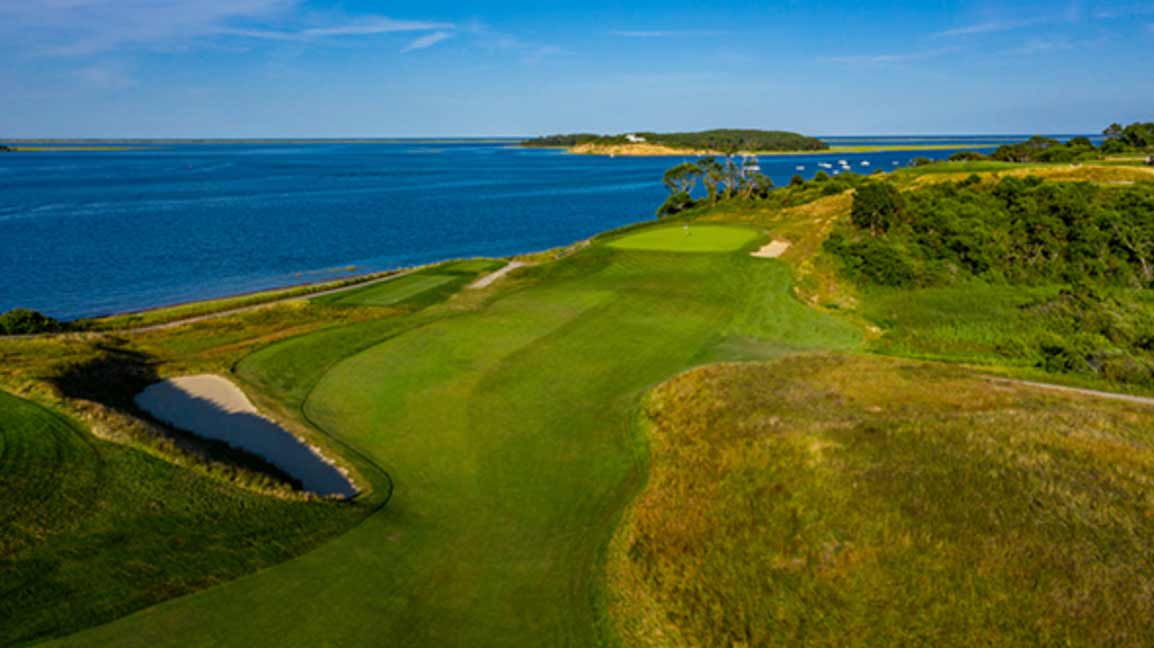
115. Valley Club of Montecito
Montecito, CA
Alister MacKenzie/Robert Hunter, 1929
Designed by Alister MacKenzie with Robert Hunter overlooking construction, The Valley Club oozes charm. The holes don’t bully players and length isn’t the issue, but approaching these greens from the optimal side of the fairway is paramount, given the firmness of the playing surfaces that the club routinely achieves. Look no further than the first two greens and how they are angled to reward play from the riskier, left side of the fairway. The only thing missing is yardage markers, but that’s only because the club doesn’t believe in them. Refreshing to find a place where the game is played by feel, not analytics.
116. Congressional (Blue)
Bethesda, MD
Devereaux Emmet, 1924/Andrew Green, 2020
Great things were always intended for this course, given its location just outside our nation’s capital. But after 100 years of existence, too many architects had had a hand in its evolution, and this Devereux Emmet design lost its Golden Age ethos. What to do? The club pivoted to Andrew Green and gave him carte blanche to wholly reimagine the course and unify it under one hand. Green delivered with the revamped design now looking like it has been there for more than a century. The alternating asks are excellent, and every aspect of your game is tested. Take the stretch of 7 through 9: the uphill par-3 7th requires a carry over the course’s deepest greenside bunker; the 8th is a teaser of a short par-4 with par amply defended at the angled green; and the 9th is a 600-plus yard rollercoaster that follows the heaving land back to the majestic clubhouse. Pete Wendt is one of the country’s finest greenkeepers and his layering of native grasses across the rollicking landscape lends the course a sumptuous texture that had long been absent. With trees removed and the wind blowing through, the days of a soft course — like the one Rory McIlroy encountered when he won the 2011 U.S. Open here — are a distant memory at the “new old” Congressional.
117. Barnbougle Lost Farm
Bridport, Australia
Bill Coore/Ben Crenshaw, 2010
Unlike its sister course Barnbougle Dunes where the holes run up and down the coast within a narrow band of dunes, the routing here defies description, with holes to-ing and fro-ing in every direction, culminating with the par-5 12th set 1,300 yards from the coastline. With the wind whipping off the Bass Strait, you need to make constant allowances for how the wind impacts each hole. The gorgeous, tiny par-3 4th kicks off the course’s finest four-hole stretch, but the pièce de résistance is Coore’s work in the flats, namely the 2nd and 12th greens and the outrageously clever par-4 16th. The course storms home from there with a long par-3 to a green benched high in the dunes and a long two-shotter that tumbles over land to an open green that is deeper than it is wide.
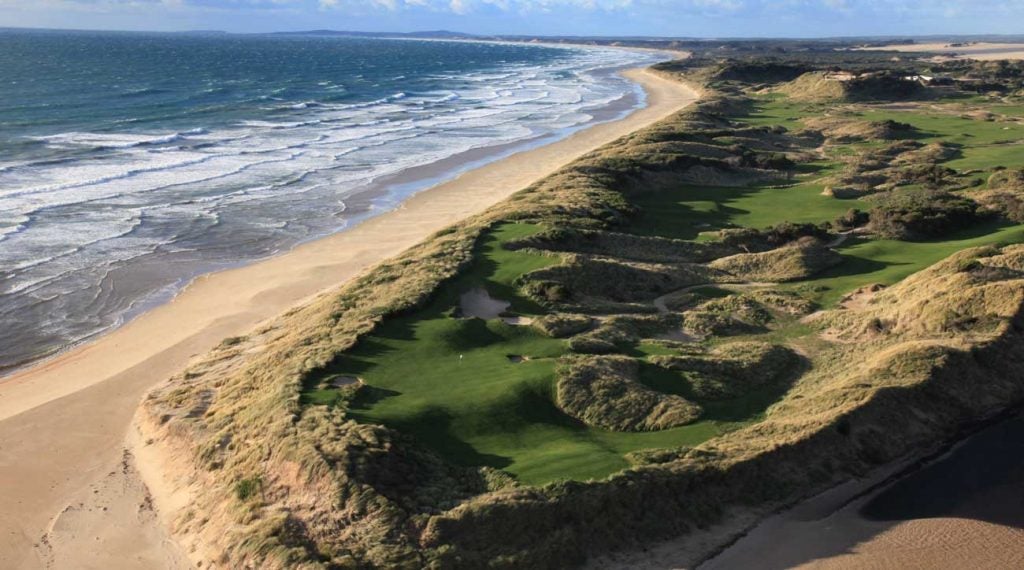
118. Royal Porthcawl
Rest Bay, Wales
Ramsay Hunter, 1897; Harry Colt 1913
One of the game’s most rousing opening 3-hole sequences is found here, with three par-4s that meander up the coastline of the Bristol Channel. By the time you reach the 4th tee, you are already smitten with the course but the quality of the golf never lets up even as you move away from the shoreline. The par-3s are all excellent and several of the other holes feature cross-hazards that put an emphasis on accurate driving. The final hole tumbles back to near where you started with a green flush against the shore. It is a worthy — and scenic — finish to a course that had the Royal title conferred in 1909. Porthcawl has become a regular host site for the Senior Open Championship and the wild weather on the final day of play in 2023 was must-watch television.
119. The Golf Club
New Albany, OH
Pete Dye, 1967
One of Pete Dye’s early masterworks, this rural retreat in suburban Columbus is where Jack Nicklaus first learned about design as an unpaid consultant. With bunkers and water hazards framed by railroad ties and tall native grasses scattered throughout, the thoroughly original design left no doubt that Dye was a generational talent in the works. Golf simply hadn’t seen holes like the 3rd and 13th. Golf architecture was about to head in a more exciting direction, one that prized variety as well as the use of grasses for texture and contrast. As The Golf Club celebrates its 56th birthday, many contend that it remains Dye’s finest inland design.
120. Pasatiempo
Santa Cruz, CA
Alister MacKenzie, 1929
Alister MacKenzie called Pasatiempo the finest course he ever built. Unlike Cypress Point, just an hour south, Pasatiempo sits slightly inland, but its high points offer views of the Pacific and the entire routing, with its giant paw-print bunkers and large, undulating greens, make plain the influence that this course had on MacKenzie’s later work at Augusta National. Charms and challenges abound, from the long, uphill par-3 3rd to the par-4 16th, a humpbacked dogleg with a second shot that plays over a chasm to a wild and winning three-tiered green. Some nitpickers grouse that the course is pinched by homes. But one of those houses belonged to MacKenzie himself, who chose to reside beside the par-5 6th.
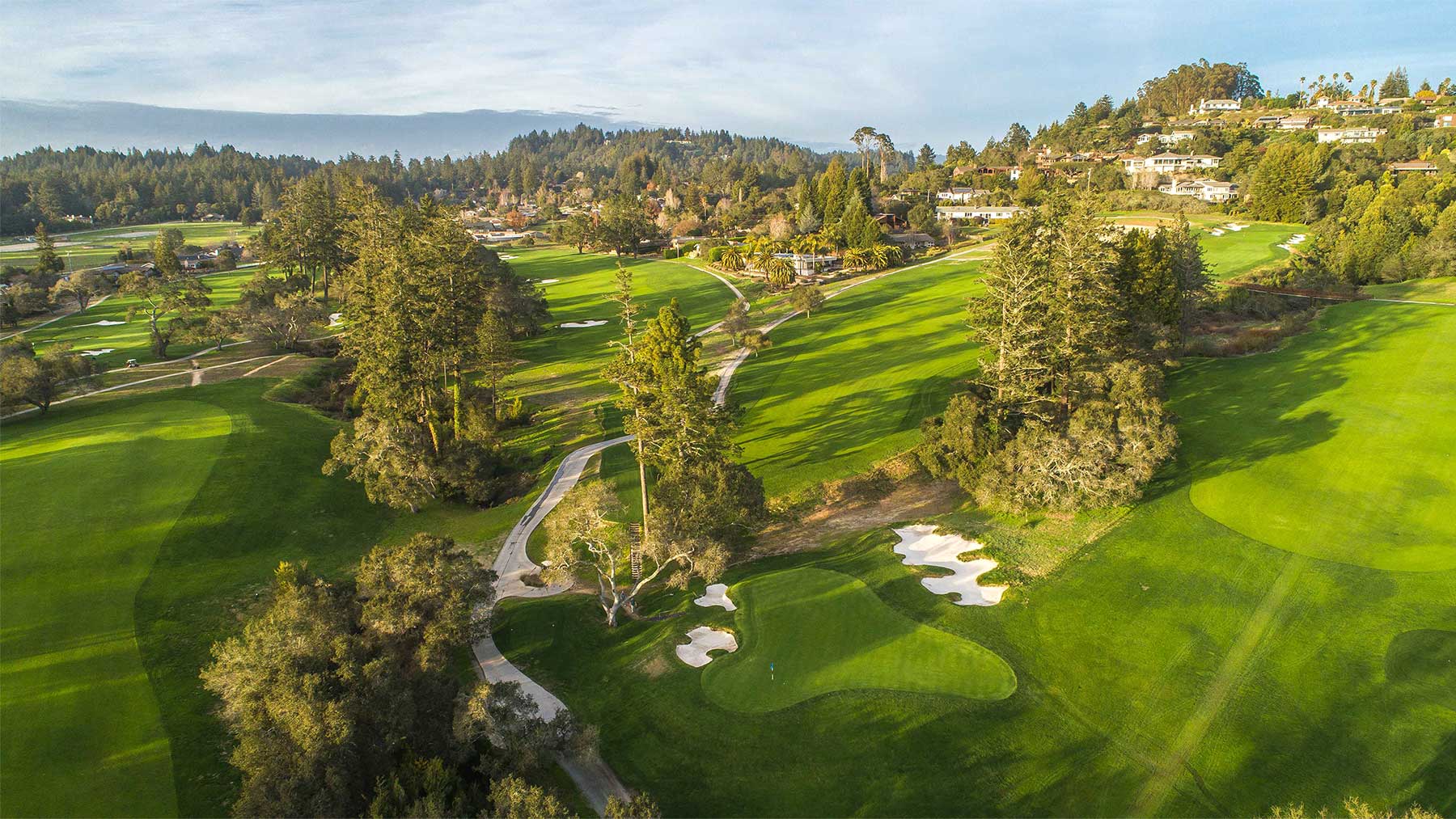
121. Paraparaumu Beach
Paraparaumu Beach, New Zealand
Alex Russell, 1949
Writes GOLF panelist Michael Goldstein: “Alex Russell, the one-time design associate of Alister MacKenzie, left many great courses behind, including the East Course at Royal Melbourne, Lake Karrinyup in Perth, and here at Paraparaumu Beach. Though it may lack the stunning vistas of the modern masterpieces of New Zealand golf, Paraparaumu’s routing is one for the purists where restraint balances against its epic, rumpled landforms, rendering a seamless stroll through the dunes. While most reviews emphasize Paraparaumu’s short holes (including the 16th, which plays to a deep but slender green), the real depth of strategic design comes from the diversity found within its two-shot holes, most notably the rumpled drivable 6th; the whimsical drive-and-pitch 8th; the rollicking 13th; and the strategic dogleg 17th. Once a bit overgrown and spongy, today’s course soars under strong custodianship — the trees are gone allowing the native wastelands to flourish and the playing corridors are once again firm and bouncy. It’s proper links golf of the highest order.”
122. The Creek Club
Locust Valley, NY
C.B. Macdonald/Seth Raynor, 1923
An epic combination of parkland and seaside golf, this McDonald-Raynor classic serves up a greatest hits of the duo’s favorite design elements. After a solid but sedate tree-lined opening five holes, the visuals explode at the spectacular 6th, which plays into a famous reverse Redan green. From there, players hit down to the Long Island Sound. Holes 10 through 14 wind through sand and water, beginning at the 11th with its massive — and unforgettable — island Biarritz green.
123. Old Sandwich
Plymouth, MA
Bill Coore/Ben Crenshaw, 2004
A modern classic with a starchy, old-school vibe, Old Sandwich occupies choice ground in the pine hills of eastern Massachusetts, where the land begins to elbow toward Cape Cod. Though not on the water, the course is often buffeted by Atlantic breezes, while its sand dunes and fescues add an extra layer of coastal atmospherics. Short par-4s are a point of pride for Coore and Crenshaw, and the Cape-style 5th is as fine an example of any they have built. But the 7th might be the more memorable two-shotter, with its green perched, island-like, amid a sea of sand.
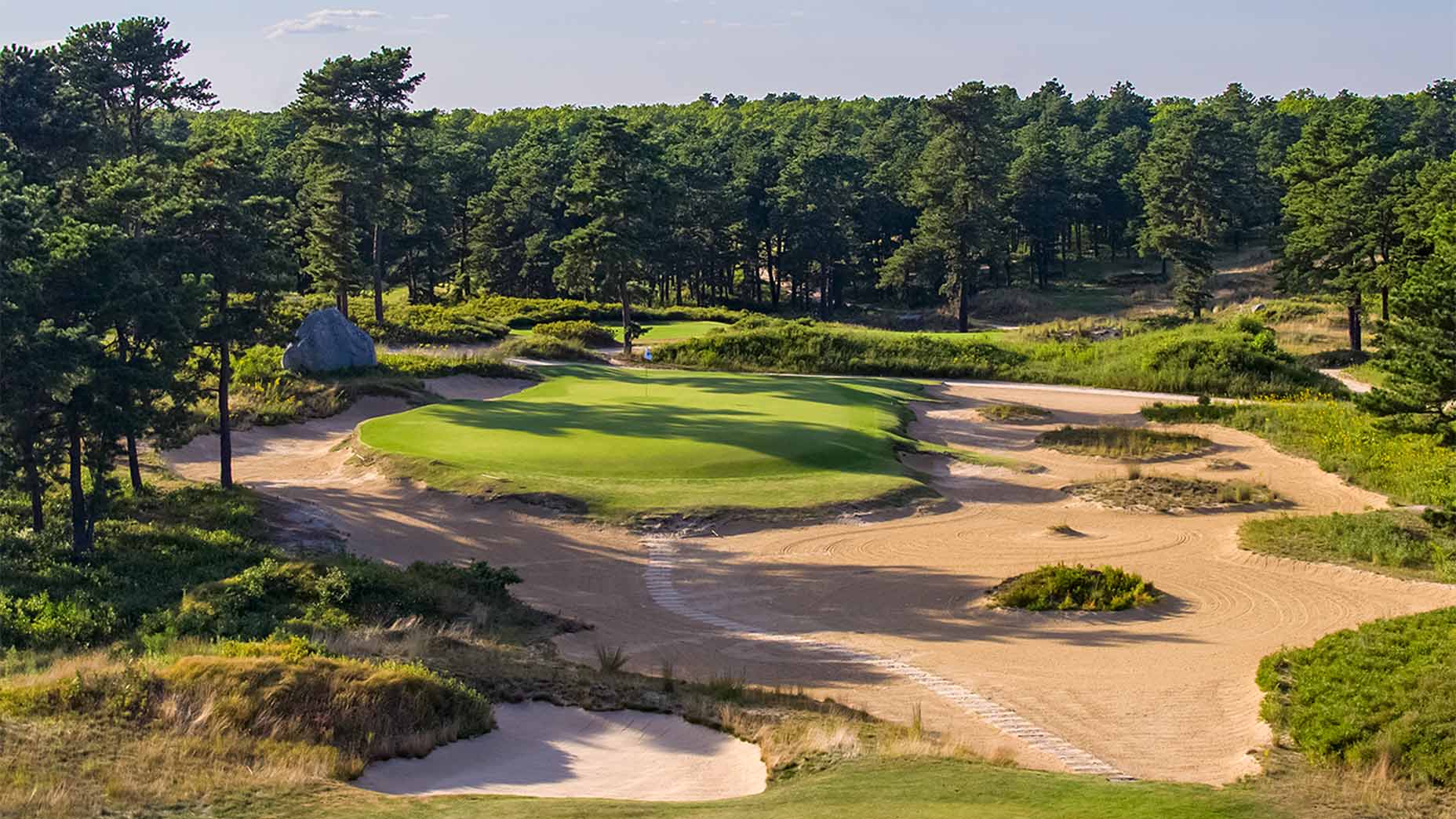
124. Tokyo GC
Sayama City, Japan
Komyo Ohtani, 1940; Gil Hanse, 2018
The only word that does this course and club justice is elegant. The existing course is in the club’s third location, and even though C.H. Alison designed the second iteration, today’s course offers even better golf. Koymo Ohtani, who closely studied and worked with Alison, deserves primary credit. He routed today’s course — anchored by a world-class collection of par-5s — and later a second green was added to each hole, with the goal of having one green with a warm weather grass and another with a cool weather variety. That made sense in that era but improvements in agronomy have rendered that approach moot. Still, the two-green system flourishes thanks to work done several years ago by Gil Hanse and Neil Cameron. At the par-3 4th, you play from the upper-right tee to the lower-left green, or you play from the lower-left tee to the upper-right green. Elsewhere, at the 6th, you can bounce a ball onto the open lower-left green that is at grade with the fairway with a creek hugging the green’s left side. But the upper-right plateau green with deep guarding bunkers poses an entirely different ask. Tokyo GC occupies an expansive piece of property, which is precisely what is required to pull off such an elaborate two-green system. First-timer visitors to Tokyo GC will leave yearning for more two-green courses, though this design will always be in a class by itself.
125. Royal Adelaide
Adelaide, Australia
H. Rymill/C. Gardner, 1906; Alister MacKenzie, 1926
A dune system in the middle of the property was put to perfect use with holes fanning in and out of it on both nines. You haven’t seen the best holes in Australia until you play the short par-4 3rd and the par-4 11th with its interrupted fairway that requires a shot over broken ground to a green nestled at the base of a large dune. Other highlights include the pugnacious par-3 7th green, which is ringed by eight bunkers and plays toward the sea less than 2 miles away. A tram line bisects the course, and the best hole on the east side of it is surely the dogleg-right 14th that features another interrupted fairway. The course and the club exude Old World charm.




